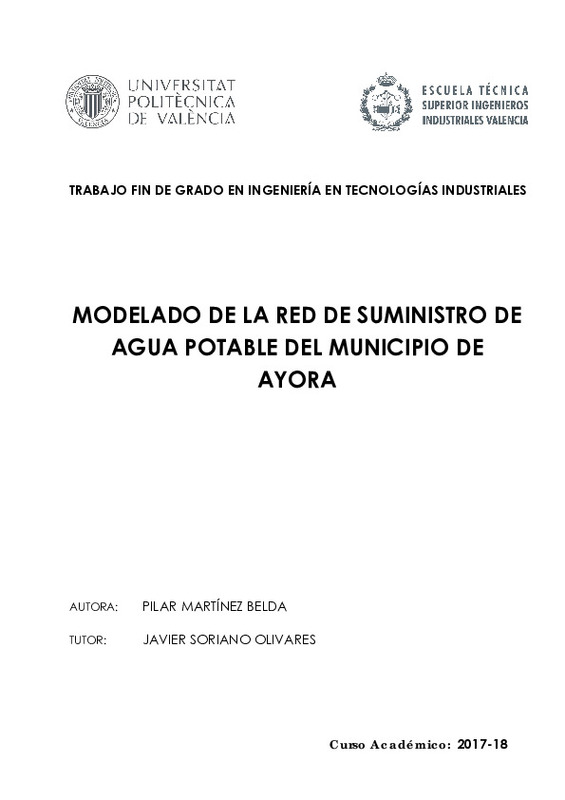JavaScript is disabled for your browser. Some features of this site may not work without it.
Buscar en RiuNet
Listar
Mi cuenta
Estadísticas
Ayuda RiuNet
Admin. UPV
Modelado de la red de suministro de agua potable del municipio de Ayora
Mostrar el registro completo del ítem
Martínez Belda, P. (2018). Modelado de la red de suministro de agua potable del municipio de Ayora. http://hdl.handle.net/10251/106920
Por favor, use este identificador para citar o enlazar este ítem: http://hdl.handle.net/10251/106920
Ficheros en el ítem
Metadatos del ítem
| Título: | Modelado de la red de suministro de agua potable del municipio de Ayora | |||
| Autor: | Martínez Belda, Pilar | |||
| Director(es): | ||||
| Entidad UPV: |
|
|||
| Fecha acto/lectura: |
|
|||
| Resumen: |
[ES] Se persigue elaborar el modelo matemático de la red de abastecimiento de agua potable de Ayora, una población situada al suroeste de la provincia de Valencia y cuya población abastecida es aproximadamente de 5.500 ...[+]
[EN] The objective of this work is the design of a mathematic model of the potable water supply network of Ayora, which is a small city in the southwest of the province of Valencia with approximately 5.500 inhabitants.
...[+]
|
|||
| Palabras clave: |
|
|||
| Derechos de uso: | Reserva de todos los derechos | |||
| Editorial: |
|
|||
| Titulación: |
|
|||
| Tipo: |
|
recommendations
Este ítem aparece en la(s) siguiente(s) colección(ones)
-
ETSII - Trabajos académicos [10404]
Escuela Técnica Superior de Ingenieros Industriales







